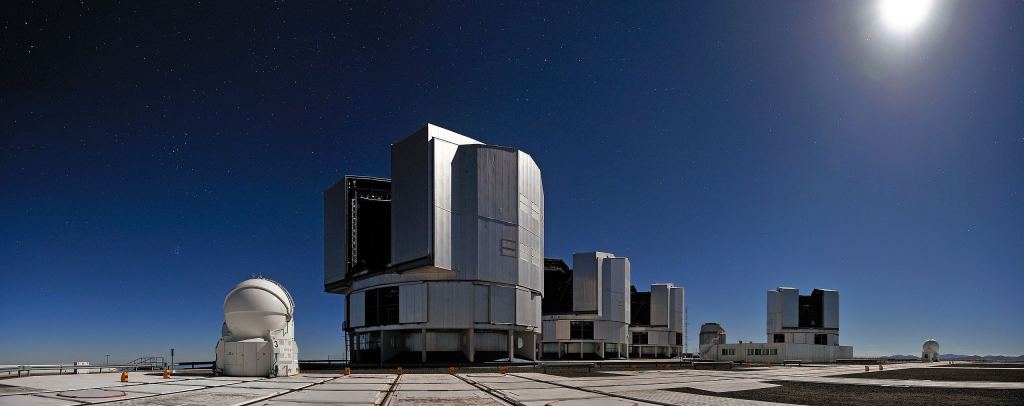We Could Detect Extraterrestrial Satellite Megaconstellations Within a few Hundred Light-Years
By Brian Koberlein
Starlink is one of the most ambitious space missions we’ve ever undertaken. The current plan is to put 12,000 communication satellites in low-Earth orbit, with the possibility of another 30,000 later. Just getting them into orbit is a huge engineering challenge, and with so many chunks of metal in orbit, some folks worry it could lead to a cascade of collisions that makes it impossible for satellites to survive. But suppose we solve these problems and Starlink is successful. What’s the next step? What if we take it further, creating a mega-constellation of satellites and space stations? What if an alien civilization has already created such a mega-constellation around their world? Could we see it from Earth?
This is the idea behind a recent article posted on the arXiv. It’s based on an idea about how civilizations might grow over time, known as the Kardashev scale. It’s based on the level of energy a civilization can tap into, where Type I uses energy on a global scale, type II a star’s worth of energy, and so on. By some estimates, Earth is roughly at level 0.7. If a Type I built a Starlink-like constellation of satellites, it would push the limits of orbital technology.

Building, launching, and maintaining such a complex structure would require a great deal of energy and raw materials, and this would generate waste heat we might be able to detect. Using some rough estimates, the paper shows that such a constellation would produce a distinct infrared signature. Furthermore, using current infrared telescopes such as the Very Large Telescope Interferometer (VLTI), we could detect this signature around any planet within about 280 light-years of us. There are about 1,000 Sun-like stars within that distance, so if Type I civilizations are fairly common we’d have a decent chance of finding one.
There have been searches for Kardashev scale civilizations before with no success. But most of these studies have focused on highly advanced Type II or Type III civilizations which would leave evidence on a galactic scale. What makes this idea interesting is that it focuses on Type I, which is much closer to where we are now. With luck, we could become a Type I civilization in a millennium. We would have a much better chance of recognizing the evidence of a civilization like ours rather than a hyper-advanced civilization that spans a galaxy.
Reference: Osmanov, Zaza. “From the SpaceX Starlink megaconstellation to the search for Type-I civilizations.” arXiv preprint arXiv:2103.07227 (2021).
The post We Could Detect Extraterrestrial Satellite Megaconstellations Within a few Hundred Light-Years appeared first on Universe Today.

May 7, 2021 at 09:58PM
via Universe Today read more...

Post a Comment